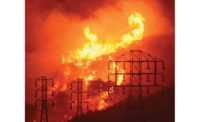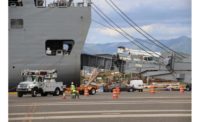Despite an increase in spending on electricity transmission, the number of outages due to transmission problems has climbed by more than 10 percentage points over the last nine years, according to the American Society of Civil Engineers in its latest “Failure to Act” report, focused on the U.S. electric grid.
Transmission spending rose from $15.6 billion in 2012 to $22.2 billion in 2018; at the same time, transmission disruptions caused 46% of the outages in 2019, up from 32% in 2011.
The ASCE report, released Sept. 2, finds the U.S. faces a $338-billion shortfall in electric infrastructure by 2039. The largest needed investment, 61%, is for new power generation, driven by state renewable-portfolio standards. The report estimates about 45,400 MW of new solar power and 32,500 MW of additional wind power is needed to meet existing portfolio standards.
An additional 29% of ASCE’s forecast shortfall is due to lack of transmission investment, while 10% will be required to improve distribution systems.
The report points out that the electricity sector has changed since ASCE issued its last electric grid “Failure to Act” report in 2011. For instance, natural gas and renewable energy are the dominant sources powering the grid, having surpassed coal since 2011. Natural disasters and their costs are on the rise, while energy efficiency also is increasing, according to the report.
ASCE says if infrastructure needs of the grid are left unmet, 540,000 jobs will be lost per year by 2039, and each American household will pay roughly an additional $563 a year.
"Reliable electricity service is essential for every family, now more than ever. Even a momentary disruption of service is no longer acceptable," said K.N. Gunalan, president of ASCE. "The electric sector is moving in a positive direction overall; however, significant investments must be made to keep our grids secure and resilient for the future."






Post a comment to this article
Report Abusive Comment